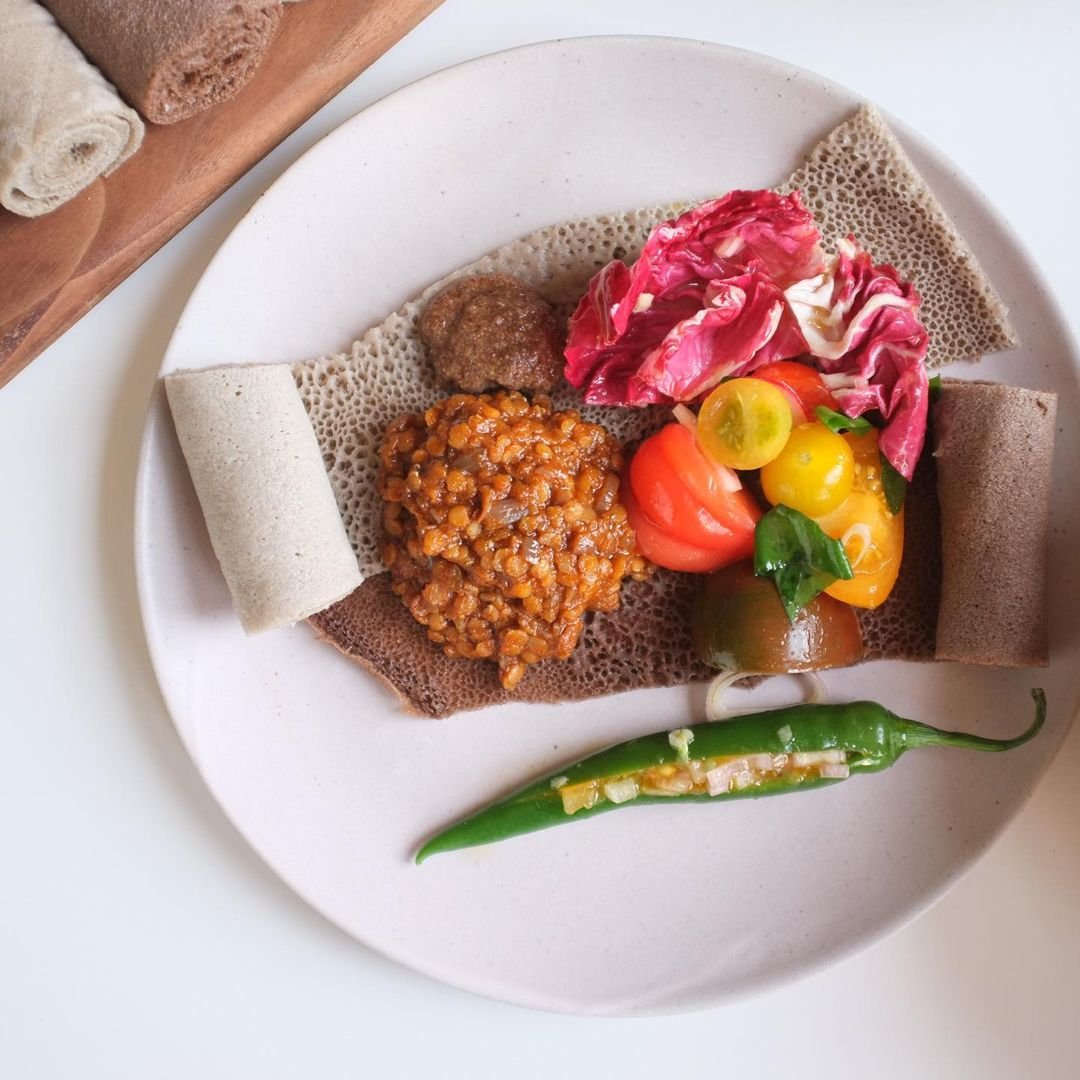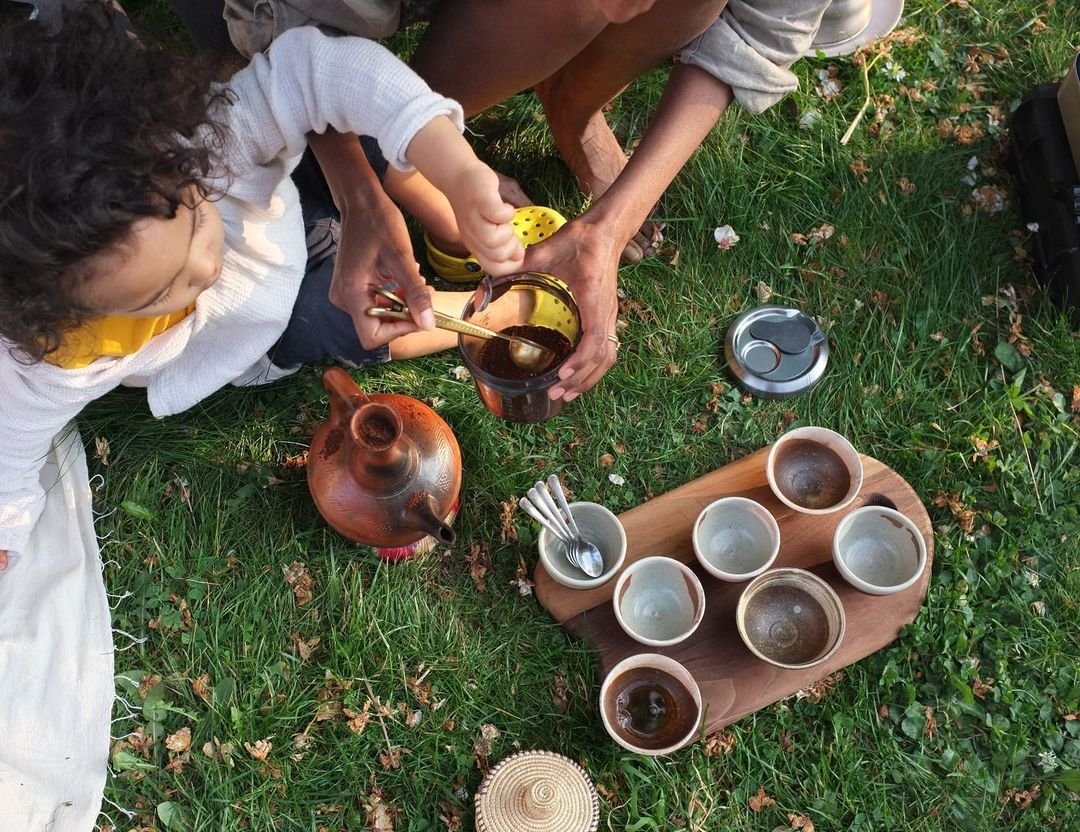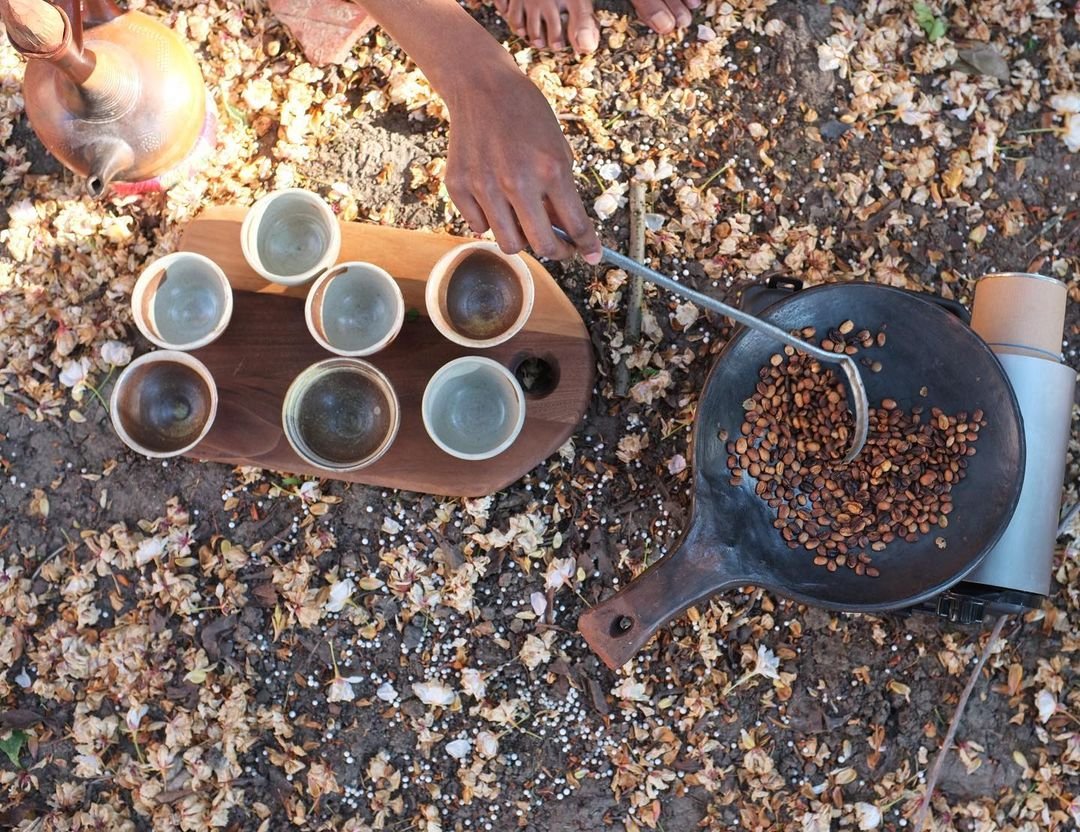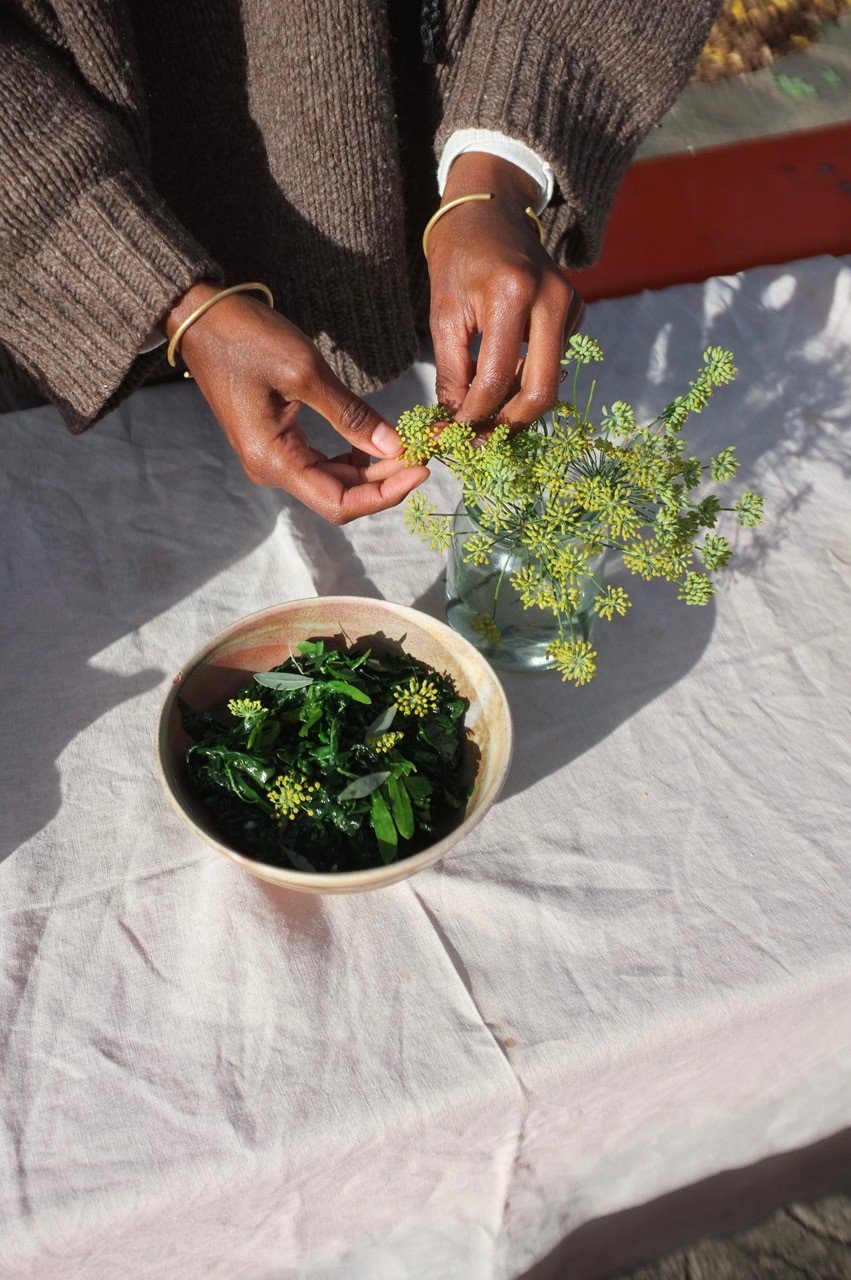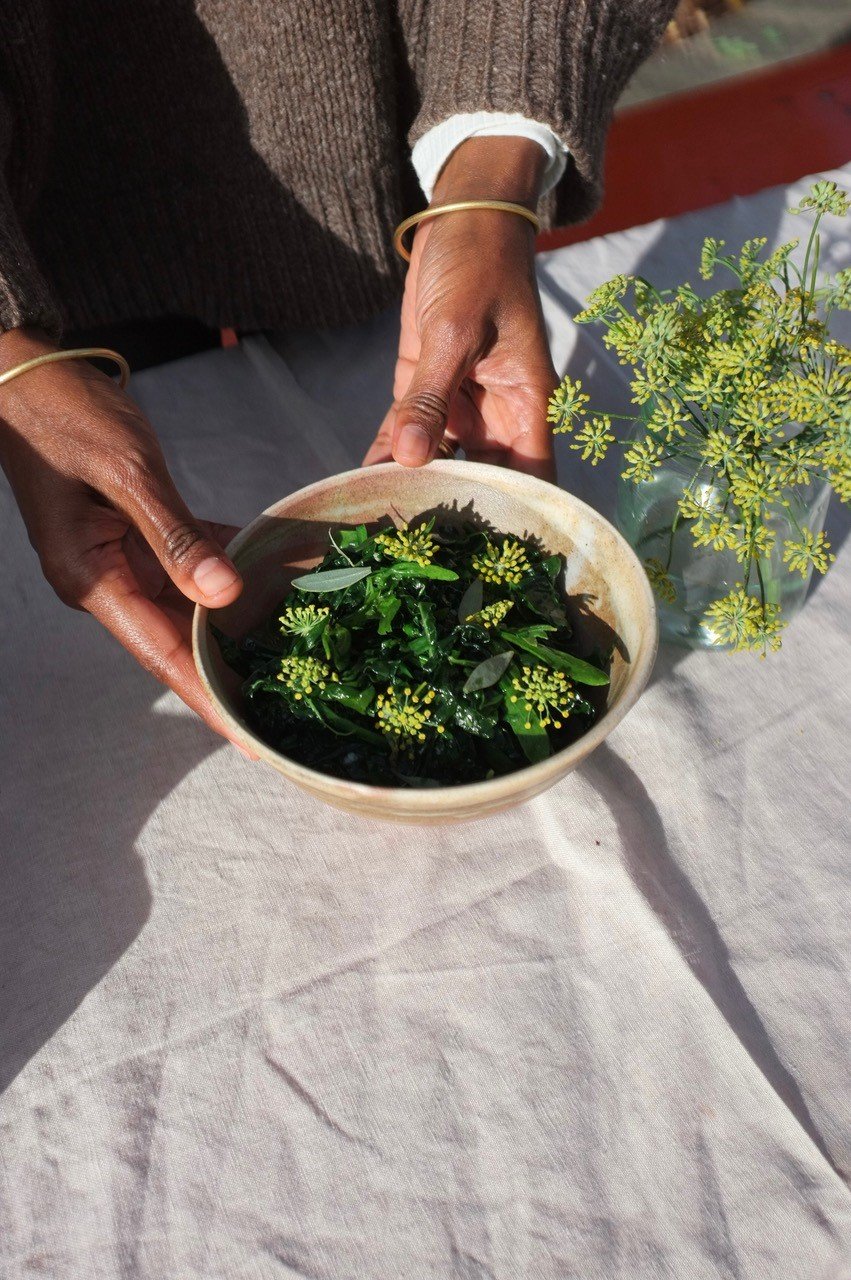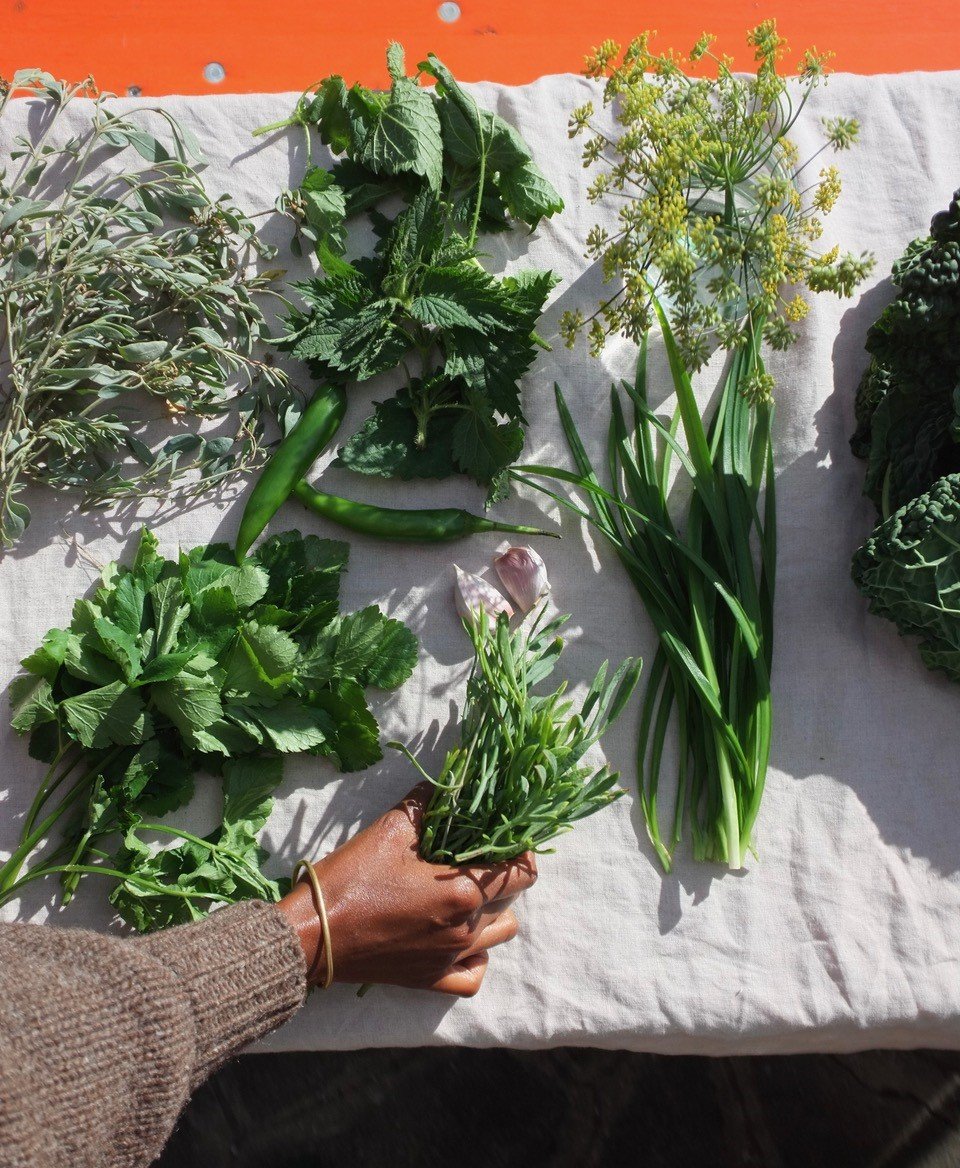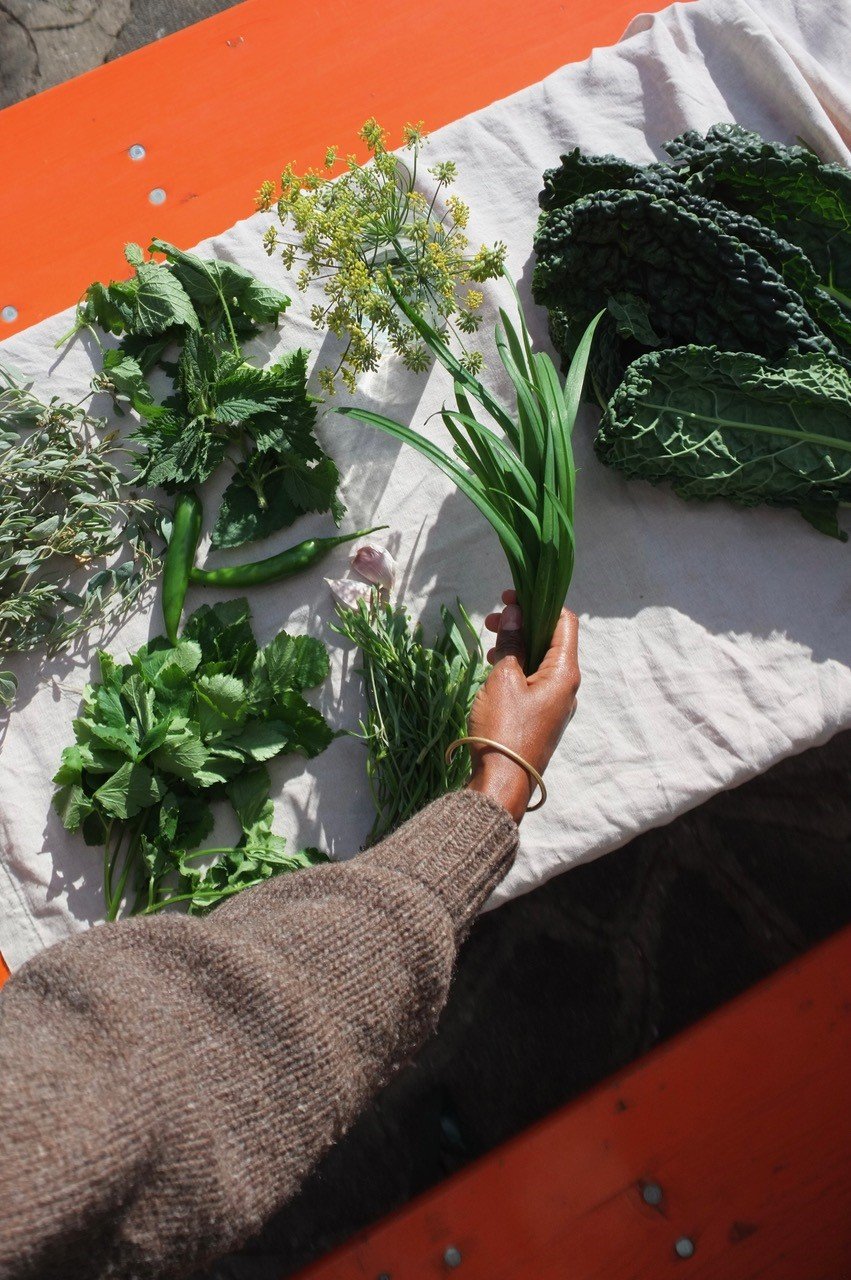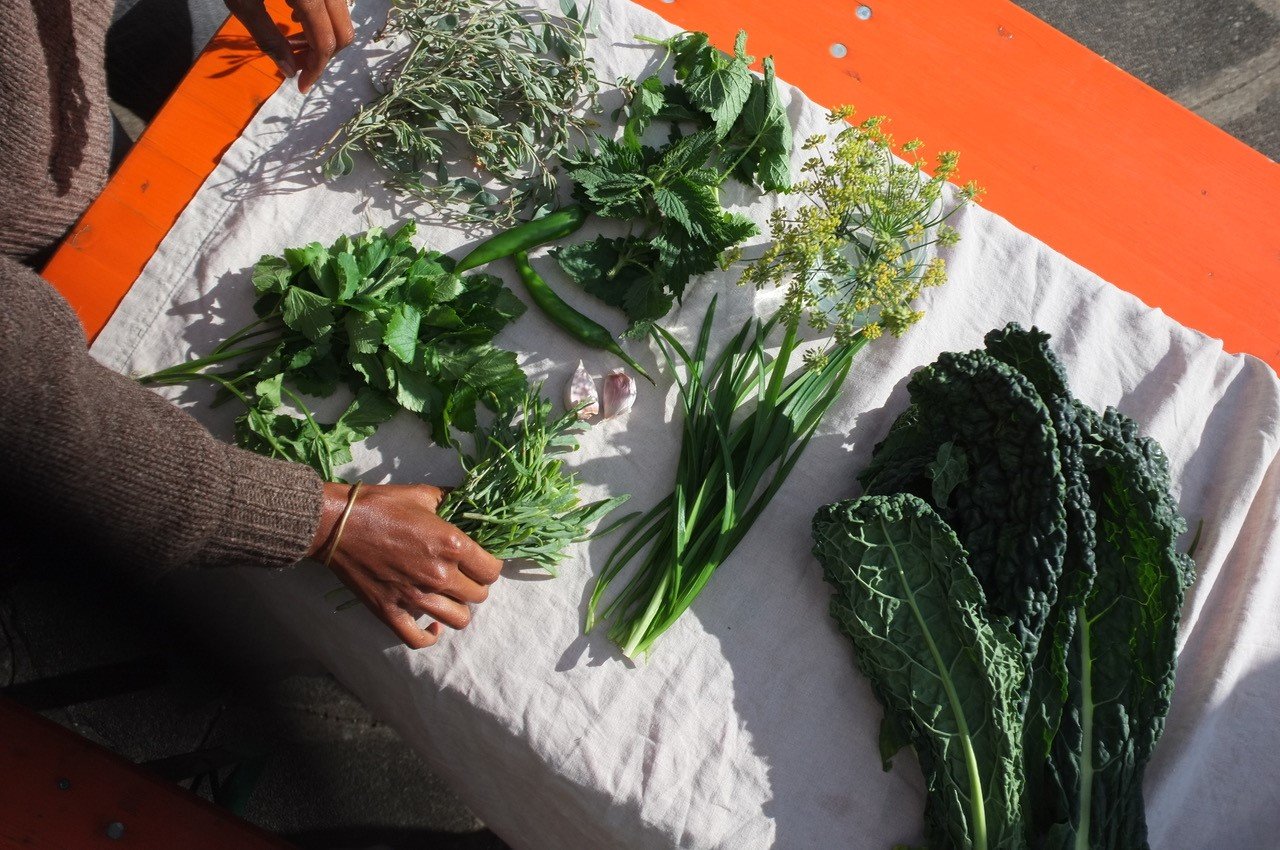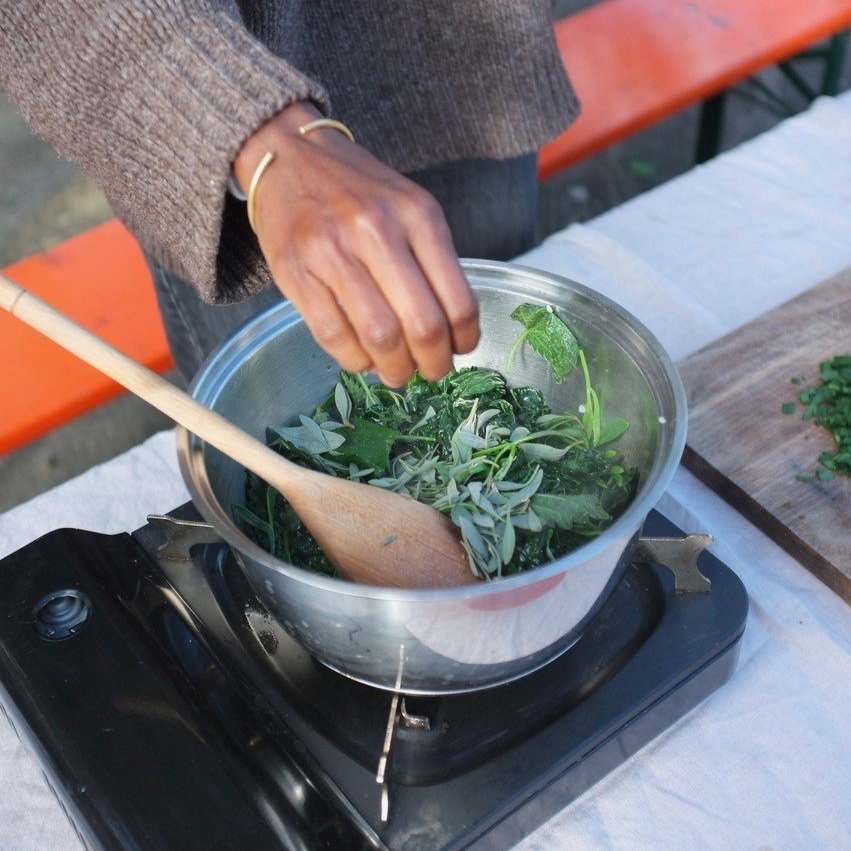eat ethio: food as medicine
“Growing up, my Mum always used food as medicine. Be it her passion fruit and orange juice in the mornings, or raw eggs and garlic when we had a cough or cold.”
Photo 1: Misir Wot and Injera / Photo 2: Plants are medicine
We are what we eat. Yet in a world of instant gratification, many of us have lost a deeper connection with our food. We can have what we want, when we want, from all over the world - be that Peruvian Quinoa or dark chocolate from the Ivory Coast. But there is a cost to pay, not least environmentally and economically.
Food supply chains are complex and also full of inequalities. Coffee, for example, is the second most world-traded commodity, and it grows along the equatorial line (Brazil, Vietnam and Colombia are top world coffee producers). However, only 10% of the value of a cup of coffee stays in the country of origin, and farmers only get 2% of this value. This narrative is repeated infinitely by different superfoods we get from all around the world.
Helina Tesega is a food and cultural curator who has created Eat Ethio - a movement to create and share a love for Ethiopian food and culture. After living in Hong Kong where the movement grew through the combination of food, music and art, Helina is now based in the UK.
Helina, you always mention how the healing powers of food and remedies are central to your cooking practice. Can you tell us more about this and give us some examples?
Growing up, my mum always used food as medicine. Be it her passion fruit and orange juice in the mornings, or raw eggs and garlic when we had a cough or cold, or the specific food she prepares for family members when pregnant or postpartum. Then there is the food she prepares for people with health issues, such as gut problems or even to help recovery of bone fractures and the like. I have witnessed her doing that throughout my childhood, hence it’s just very natural for me now to use that in my cooking, be it feeding my family and raising my young child, or for guests in my house.
I’ve taken that on a step further now since embarking in herbal medicine practice, which is deepening my knowledge and is something I’m finding I can integrate quite naturally into my daily life as well as my supper clubs. It’s quite incredible and I find the knowledge so fascinating and I’m keen to share that, so for example I will use a lot of wild plant infusions, ferments and homemade vinegars as part of my menu for supper clubs.
Biriz: a fermented honey water. An ancient Ethiopian non-alcoholic drink
Ethiopians are proud of their very unique food, and all the rituals around it are mesmerizing. How has this affected your relationship with food?
In every possible way. That ritual and relationship with food has made me see food beyond just simply being fuel. Knowing where your food comes from, the respect that goes into preparing it, be it the preparation of injera that takes 4-5 days from the start of fermentation to the making of each individual injera which involves pouring the batter in a circular motion on a flat pan (mitad), or simply choosing a live chicken, lamb or goat from market, then blessing it before the butcher. Almost every part of the animal will be eaten, so there is no waste. Then there are the rituals around eating specific foods at certain times of the year or actually also giving them up at certain times too.
Perhaps one of the most known rituals is the coffee ceremony, taking place for at least an hour before drinking a cup, the smell of freshly roasted coffee, the fresh grass and flower that is laid on the ground as part of the ceremony and the frankincense and myrrh that burns throughout.
Helina preparing a coffee ceremony
When you grow up in this way, you can’t help but have a strong relationship with food. Culturally we eat food together, we eat by hand and also feed each other by hand. We cook together and cooking is communal, slow and done with love and conversation, always whilst sipping coffee. Friends and family gather, cooking is never a lonely experience.
You moved to Hong Kong and then Europe, where there is always so much abundance and options to choose from. What is your key advice for getting intimate with the food we eat?
Getting to know the local ingredients is really important, the season, the farmers markets, your local fishmonger etc. This is always vital for me when I move to a new area. Also now I try to get to know the local wild plants, find the connection to them and the land. Cooking with local plants creates an intimacy with the food you eat, it connects you to recipes, stories and the ancestors of the land.
You have always been very vocal about the problem with superfoods and how this affects the local communities that produce them. Can you tell us more about the issue?
I started to pay attention when I read about quinoa and the impact global consumption was having for indigenous communities, where the grain they had relied on heavily for generations was now deemed a ‘superfood’ and marketed to an international audience and becoming scarce for them.
Reading about that situation made me very conscious of how trends and marketing can upset communities far and wide. Almost immediately after reading about quinoa I started to see headlines that said ‘move over quinoa, teff is the new superfood’! For me knowing personally how much teff is relied upon in Ethiopia (mostly for injera) and knowing how integral it is to daily life, I became very anxious. How all of sudden is one country going to feed the whole world now everyone was curious about teff? I started noticing brands appearing from everywhere, some were selling teff without any cultural awareness or mention of its origins, and then others did but connected teff to charity and age old narratives as part of their marketing campaign. That made me become more vocal about my concern. Fortunately shortly after, other countries started growing teff which resolved the potential problem to some extent, but obviously meant there was no financial gain for Ethiopia.
Actually there is now one brand aptly named Lovegrass who is on a mission to change that, and is growing and exporting teff internationally from Ethiopia, doing justice to the origins and story of this incredible tiny grain.
Injera is simultaneously food, eating utensil and a plate
How can we find the balance between eating globally and sustainably?
I would say conscious eating. We live in a time where we travel the world and experience different flavours and cultures. To a certain degree we’re all global citizens these days and we expect to get those flavours from abroad when we get back home. I believe we can get those authentic flavours, but we can do it sustainably by largely using local ingredients.
I have cooked Ethiopian food in Asia and now in Europe, I have adapted traditional recipes by using local ingredients without compromising the flavour. Actually the result is something exciting and always new which for me actually keeps me on my toes and stops me becoming stagnant.
GOMEN RECIPE
This dish is one of the easiest and most accessible Ethiopian dishes to cook. All the essential ingredients are easily available in most countries and markets, so it's a great introduction to Ethiopian cooking. It's delicious, nutritious and versatile too.
I cook this dish all the time, either serving it more traditionally as part of an Ethiopian vegetarian platter or adding it to pretty much any dish as a side.
Gomen is a very typical side dish which actually can sometimes be served as a main with the addition of short ribs, one of my favourites. But generally, you see Gomen as part of a vegetarian platter (yetsom beyaynetu). It’s a staple dish that I love, and I cook it a lot.
Since I can’t obtain the exact same greens abroad, I use a variety of alternatives, which have been different depending upon where I’ve been living at the time. These days though, I tend to stick to cavolo nero when in season, which perhaps feels the closest in texture to the greens back home, and they’re very nutritious and rich in vitamins and iron.
So this recipe is my take on the delicious Gomen dish, with some foraged highly nutritious additions (optional).
Since moving to the seaside, I’ve been using a lot of sea purslane which I pick when I’m walking along the coast with my son, he loves it and snacks on it as we walk. It’s highly nutritious and is also known to contain omega-3 fatty acids, more than any other leafy vegetable. At the moment, my other beloved perfume-like addition is spicy rock samphire, which is packed with minerals, is a good source of iodine and is especially high in calcium. Both will disappear here soon as we hit the UK winter, so I wanted to add it to this recipe, plus nettle, alexanders and three-cornered leeks. Alexanders are everywhere on the coast. An ancient medicinal herb known as the parsley of Alexandria, it is very pungent. Three-cornered leeks grow abundantly, mostly taking over every corner they find. It’s a milder taste than wild garlic; I’m using them here as a replacement for spring onion.
So for me, by adding these foraged ingredients, a simple Gomen becomes even more nutritious with each special ingredient upping the flavour too. This is my personal take on Gomen, reflecting my locality and showcasing the goodness and abundance of the Earth.
Serves 4 (as a side)
Preparation time: 3 mins
Cooking time: 7 mins (approx)
Ingredients
200 grams of cavolo nero or kale
(large central stalks removed and leaves thinly shredded, traditionally this recipe uses yehabesha gomen rather than cavolo nero)2 cloves of garlic (crushed)
2 tablespoons of olive oil
Sea salt
1 jalapeno pepper for garnish, seeds removed & halved lengthways
Freshly ground korerima (Ethiopian cardamom)
Addition (optional)
a bunch of sea purslane leaves picked
a bunch of rock samphire
a bunch of nettle leaves
a bunch of three-cornered leeks chopped
a bunch of alexanders chopped
a few wild fennel flowers
Preparation
Boil a kettle whilst you’re preparing your veggies (you might need a splash of hot water during the cooking process)
Wash and drain your cavolo nero
In a saucepan, add the oil on medium heat and when it starts to heat, add your garlic for a minute
Add the cavolo nero (one small handful at a time), mix with the garlic oil, add a pinch of sea salt and a splash of hot water and cover with a lid. Leave it to sweat and wilt for 5 minutes stirring once or twice,
Then add then the rock samphire, nettles and sea purslane, and cook for 1 minute
Finally, add the alexanders and three-cornered leeks
Garnish with jalapeno pepper and taste the salt
Add the Ethiopian cardamom if using it
Serve with a few wild fennel flowers.
Tip: Traditionally served on Ethiopian flatbread, ‘Injera’, with a selection of other vegetarian dishes, but works well as a side dish for pretty much any meal.
You can keep following Helina’s creations on eatethio.com or on her Instagram!
“Culturally we eat food together, we eat by hand and also feed each other by hand. We cook together and cooking is communal, slow and done with love and conversation.”
Helina Tesega


